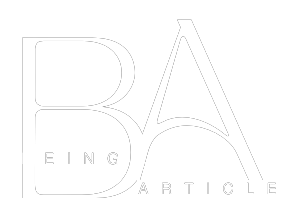How To Read Spectrum Modern History?
When reading Spectrum Modern History, understand the events and concepts discussed chronologically. Read through the introduction and preface to gain an overview of the book’s scope and the author’s approach.
Afterward, go through each chapter systematically, taking notes and making connections between ideas discussed. It may be beneficial to supplement your reading with other resources like online articles or videos to gain further insight into certain topics. Don’t rush through it; take time to absorb what you’ve learned, reflect on it critically, and consider its place in world history.
Tips To Read Spectrum Modern History
The word spectrum was first used scientifically in optics to denote the range of colors visible when white light passes through a prism. Later, it came to refer more broadly to conditions and behaviors which cannot be precisely quantified or defined.
Modern History is an essential subject in the UPSC CSE Prelims exam. However, reading it from cover to cover can prove a daunting challenge for many candidates.
Read the Title Page
The title page is often the first place to look for information on a publication. It usually provides the name, publication date, and volume number. Frequently Times, this same title also provides an outline of its contents.
Isaac Newton popularized the term “spectrum” in optics during the 17th century. This refers to a range of colors visible when light is dispersed through a prism and has since been employed in many fields such as physics, biology, and chemistry.
Physics often refers to a spectrum as a plot that displays the intensity or power of a signal as a function of frequency or wavelength (e.g., spectral density plot). Biology and psychiatry often use the spectrum to refer to an assortment of conditions or behaviors that may be connected but whose exact causes remain uncertain.
Read the Topic
For instance, the term “spectrum” can describe a range of political opinions, drug activity, or autism where values within it are poorly defined and often unquantifiable. Such term uses are sometimes misleading since they do not accurately capture all human thought and behavior.
One of the most captivating aspects of reading newspapers is witnessing their evolution in design over time. Not just a matter of taste but an indication of what readers need at that particular moment.
I enjoy looking back at past issues of The Spectrum, a student-produced newspaper at North Dakota State University, to gain insight into its evolution and how it has adapted to contemporary issues. Then, using that insight, I can plan for future designs of The Spectrum.
Read the Table of Contents Notes
The table of contents is an excellent starting point. It lists chapters chronologically, saving you the hassle of skipping ahead. Plus, there’s lots more useful information in there too!
EduRev Experts have compiled a list of the most useful facts for each chapter to help you sort through the fluff. The table of contents is ideal for the first few chapters and can serve as reference material in subsequent sessions. What’s great about it is that it’s not overly dense, meaning you could read it in under an hour if you are fast. Furthermore, since it’s free, there’s no cost to print or access it with an internet connection; plus, it easily contains important sections from the book too!
Analyze The Table Of Contents Summary
The table of contents is an essential element in modern history study. It displays chapter order and gives you a list of topics to study. Furthermore, it includes page numbers which can be helpful if you want to review information or compare it with other reading material.
The Table of Contents is typically composed of bullet points that give an overview of what to expect throughout the book. However, suppose there are more than a few chapters. In that case, the table may also have subheadings or a table dividing the text into sections for ease of reading if you’re particularly interested in one area but lack time to read it thoroughly.
Though there are numerous ways to construct an impressive table of contents, a few universal guidelines will get you started. First, ensure the headings correspond with the document being used – if not, consider changing them.
Next, ensure the page numbers in the Table of Contents match those in your document. Doing this will prevent confusion and allow for easy use of the document.
The word spectrum comes from the Latin phrase “image” or “apparition.” It was first used in optics to describe the rainbow of colors visible when light passes through a prism. Later it was expanded to refer to all frequencies of electromagnetic waves – energy types that can be measured with scientific instruments.
What Do You Understand After Reading Spectrum History?
As a Client Services Manager, your role is critical to driving client satisfaction in the Spectrum Enterprise team. You ensure client expectations are exceeded through successful interactions with the Sales, Billing, and Technical Support teams.
Merriam-Webster describes “spectrum” as a popular shorthand for acknowledging an array of human experiences. It breaks away from simplistic thinking and promotes diversity of thought, helping us avoid black-and-white thinking.
What do you understand after reading Spectrum history?
One of the most challenging parts of long-haul preparation is identifying which materials are ideal for you and your partner. Combine print and online resources to keep costs down – this saves time and money! In addition, having the correct study materials will help boost overall marks scores. To make things easier for you, we have compiled a list of our top 5 sources of information that will assist in finding suitable study materials based on our testing and experience, as well as feedback from loyal customers.
What Is Spectrum?
Spectrum, also known as electromagnetic radiation, encompasses all wavelengths from radio waves (like what we listen to music with) down to X-rays and gamma rays. Initially limited only to visible light signals, the term has since come to include other signals which could be measured based on frequency.
Radio waves exist in a spectrum, divided into distinct bands based on characteristics like speed, propagation, and range. The FCC allocates these bands to users to efficiently use the spectrum.
Some parts of the spectrum are more valuable than others; for instance, high-frequency (HF) frequencies–600, 700, and 800 megahertz–are essential to cellular operators as they offer enough speed and can quickly transmit large amounts of data. It also travels well over long distances, making setting up cell phone towers simpler.
However, other parts of the spectrum are less desirable as they’re either not fast enough or can’t transfer as much data. For instance, short wavelengths (300 MHz to 300 GHz) are insufficient for cellular service due to lack of speed and range; instead, telecom companies focus on lower parts of the spectrum with more bandwidth but shorter wavelengths and consume fewer resources.
The government is gradually opening up new spectrum bands to commercial use, creating space for services like the Internet of Things (IoT) and 5G wireless technology, and more traditional mobile network applications.
In late 2019, the FCC approved Citizens Broadband Radio Service (CBRS), a new band designed to deliver cellular service inside densely packed buildings. This could help solve the “last mile” challenge telcos face when providing services to end-users situated inside.
Spectrum Mobile offers some extra features for those who aren’t interested in them, and you can cancel your mobile plan within 30 days for a full refund minus $35. You will still be responsible for any outstanding device payments on your account, making this an attractive deal that should satisfy most people.
What Is A Spectrum Of Authority?
The spectrum of authority is a useful tool to help identify where arguments and claims originate. It distinguishes between “hot ends,” such as feelings, beliefs, and cultural influences, from the “cold ends,” scientific evidence.
Utilizing a spectrum of authority strategies can illuminate the sources behind your opponents’ arguments and help you find common ground. It is especially helpful when analyzing an argument or claim when one side doesn’t seem clear what they are saying.
A profile is a name given to a collection of configuration information distributed by a configuration manager when a managed server subscribes to it. This data may include registered administrator IDs, policies, client schedules, storage manager command scripts, and server and server group definitions.
It is essential to remember that names can be misleading, as they can mean different things depending on context. For example, a name could signify information is available at a remote location like a backup-archive client node or vSnap server. On the other hand, it could be the name of an enterprise configuration object like an enterprise data management server.
An object storage pool is a database that stores files and media objects, such as backup versions, archive copies, and files migrated from hierarchical storage management client nodes (space-managed files). This storage can be located within or outside a server’s internal or external memory or accessed over its network interface to another server.
IBM Spectrum Protect Plus provides several modes that facilitate data recovery from disaster scenarios by creating a recovery image of one or more virtual machines and applications. This mode can be implemented at either the primary production site or the secondary recovery site.
IBM Spectrum Protect command scripts offer a convenient way for administrators to execute administrative commands from any interface with the server. These commands can be utilized for backup/restore encryption and storage pool management.
What Is The Spectrum Of Authority Strategy?
Spectrum is a limited resource managed by regulators to guarantee fair and equitable access to its spectrum for various users and services. It supports over-the-air broadcasting, government research projects, commercial voice/data services like home networking, industrial scientific and medical applications, and amateur radio (Figure 6.3).
Regulators must manage the spectrum to ensure interference-free operations between different users. This is done through national frequency allocation tables, which outline how the spectrum will be assigned. Moreover, the International Treaty on Radio Regulations sets standards for spectrum management globally.
Methods Of Licensing Spectrum
Various methods for allocating and licensing spectra include administrative assignments, auctions, lotteries, and unlicensed access (see Figure 6.4). The most popular approach is to assign spectrum through an administrative assignment process.
Regulators can use this approach to achieve their policy objectives, encouraging 5G network deployment or expanding coverage into underserved areas. Furthermore, assignment guidelines may differentiate incumbent and new entrant obligations and foster competition in the market.
Implementing this approach can be complex and requires an extensive planning process. However, it provides governments with a way to address the growing demands for spectrum, such as wireless communications and associated data applications fueling economic activity and creating high-wage jobs across America.
To implement this strategy, regulators must identify and prioritize key spectrum uses that require special consideration. These include fixed and mobile broadband; next-generation satellite communications; advanced transportation; industrial, scientific, and medical applications; and key government uses like national defense, airspace management, and critical infrastructure.
Regulators must plan and consider technological advancements allowing new applications to utilize the spectrum efficiently. Furthermore, they should guarantee a robust regulatory and administrative structure for managing spectrum management, decreasing interference, and providing equal access for all users.
As technology develops, the demand for spectrum will only continue to increase. To ensure efficient spectrum use, spectrum authorities should create strategies that address emerging technologies and business models. Doing so allows stakeholders to take advantage of these innovations and gain a competitive advantage for themselves and their communities.
FAQ’s
What is Spectrum Modern History?
Spectrum Modern History is a book that covers the history of India from the mid-eighteenth century to the present day. The book is written by Rajiv Ahir and is a popular choice among students preparing for competitive exams like the UPSC.
What is the best way to read Spectrum Modern History?
The best way to read Spectrum Modern History is to read it systematically, chapter by chapter, and try to understand the context, causes, and consequences of various events in Indian history. It is also important to make notes and revise regularly.
What are some important topics covered in Spectrum Modern History?
Some of the important topics covered in Spectrum Modern History include the advent of the Europeans in India, the Indian struggle for independence, the partition of India, the formation of the Indian Constitution, and the economic reforms of the 1990s.
How can I remember the dates and events mentioned in Spectrum Modern History?
One way to remember the dates and events mentioned in Spectrum Modern History is to create a timeline and jot down the important dates and events. You can also try to connect the events with the people and places associated with them to help you remember them better.
Is it necessary to read Spectrum Modern History for competitive exams?
Yes, Spectrum Modern History is an important book for students preparing for competitive exams like the UPSC. The book covers a wide range of topics and provides a comprehensive understanding of Indian history, which is essential for cracking these exams.
How much time should I devote to reading Spectrum Modern History?
The amount of time you should devote to reading Spectrum Modern History depends on your preparation strategy and the time available to you. However, it is recommended that you read the book thoroughly and revise regularly to ensure that you have a good understanding of the subject.



















